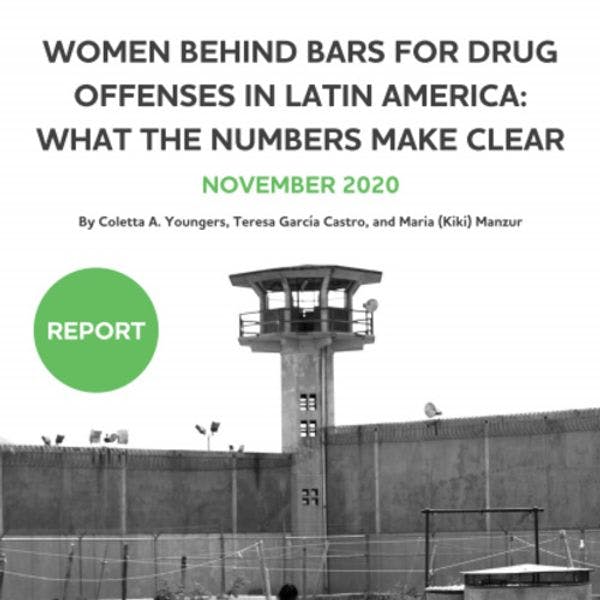Women behind bars for drug offenses in Latin America: What the numbers make clear
By Coletta Youngers, Teresa Garcia Castro & Maria (Kiki) Manzur / Washington Office On Latin America (WOLA)
Women’s incarceration in Latin America has increased dramatically over the last two decades. Not only have the sheer numbers increased, but the percentage of females in the overall prison population has also risen, and the rate of the ongoing increase in the size of the female prison population is alarming. Moreover, the number of women being put behind bars is growing much faster than the number of men.
These trends cannot be explained by growth of the overall female population, or simply by the increase in the total number of prisoners. Rather, the driving force behind the data is the adoption of punitive drug laws that disproportionately affect women. In the majority of Latin American countries, drug-related crimes are the main cause of female incarceration. For instance, available data shows that in Argentina, Bolivia, Brazil, Chile, Colombia, Costa Rica, Ecuador, Mexico, Panama, Paraguay, Peru, and Venezuela, drug-related offenses are the most common offense for female prisoners. In sheer numbers, more men than women are incarcerated for drug-related offenses in Latin American countries. But the percentage of women imprisoned for that offense is almost always higher than the percentage of men. Data compiled by WOLA shows that in Brazil, Chile, Costa Rica, Panama and Peru, the proportion of women prisoners who are incarcerated for drug offenses is at least 30% higher than in the case of men imprisoned in those countries. The excessive use of pretrial detention is a primary factor contributing to the over-incarceration of women for drug offenses in Latin America. Research shows that more women than men are in pretrial detention for drug offenses in almost all of the countries studied.
